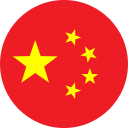the outermost layer of the Earth, consisting of solid rock and divided into the continental crust and the oceanic crust

地壳, 地球的地壳
particles of solid material that settle at the bottom of a liquid

沉积物, 沉淀物
the process by which soil and rock are gradually destroyed and removed by natural forces such as wind, water, and ice

侵蚀, 腐蚀
the scientific study of minerals, their composition, properties, and classification, often involving the analysis of crystal structures and the identification of various mineral species

矿物学, 矿物研究
the branch of geology that focuses on the study of rocks, their classification, composition, origin, and the processes involved in their formation

岩石学, 岩石研究
the scientific study of landforms, their origin, development, and classification, often examining the processes that shape the Earth's surface, such as erosion, deposition, and tectonic activity

地貌学, 对地形形成、发展和分类的科学研究
a tapering, icicle-like mineral formation hanging from the roof of a cave or underground structure, typically composed of calcium carbonate deposited by dripping water containing dissolved minerals

钟乳石, 悬挂的矿物形成
a cone-shaped mineral formation rising from the floor of a cave or underground structure, formed by the deposition of minerals from dripping water containing dissolved substances

石笋, 从洞穴地面向上生长的矿物形成物
a vast and longest subdivision of geological time

宙, 地质时代
a supercontinent that existed during the late Paleozoic and early Mesozoic eras, comprising most of Earth's landmasses fused together before breaking apart into the continents we recognize today

盘古大陆, 泛大陆
an ancient supercontinent that included South America, Africa, Antarctica, Australia, the Indian subcontinent, and the Arabian Peninsula

冈瓦纳大陆, 冈瓦纳超大陆
a hypothetical ancient supercontinent that existed from the late Precambrian to the Jurassic period, comprising the landmasses of present-day North America, Europe, Asia, and parts of Antarctica, before it began to break apart

劳亚大陆是一个假想的古代超大陆,存在于前寒武纪晚期到侏罗纪时期,包括现今的北美洲、欧洲、亚洲和部分南极洲的陆地,之后开始分裂。, 劳亚大陆是地球地质历史上的一个重要陆地,包括了北美洲、欧洲和亚洲的部分地区。
the total amount of water on Earth, including oceans, seas, lakes, rivers, groundwater, and atmospheric water vapor

水圈, 水界
a principle in geology stating that in a sequence of undisturbed sedimentary rock layers, the youngest rocks are at the top, and the oldest rocks are at the bottom, helping determine the relative ages of geological formations

叠加, 叠加原理
a visible exposure of rock or geological strata at the Earth's surface, often occurring on hillsides, cliffs, or other elevated areas, providing insight into the underlying geological structure

露头, 岩石露头
solid rock beneath surface materials, forming the Earth's crust foundation

基岩, 岩床
the region of the Earth's interior, lying beneath the crust and extending to the outer core, composed of solid rock that can deform and flow over geological time scales

地幔, 地球的地幔



